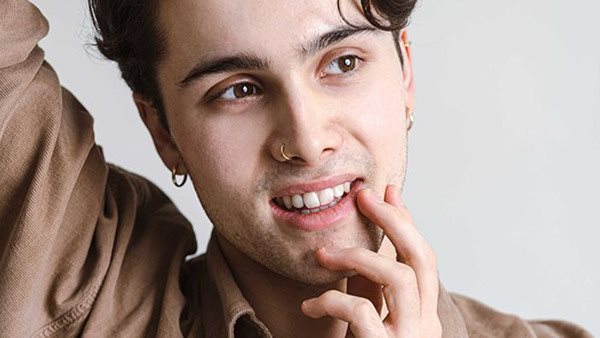
– I have made a lot of contacts and am constantly learning more about different theaters and choreographers, something that I feel gives me more opportunity to choose exactly what I am interested in, says William Lundberg, about the experience from the internship in Germany.
Why did you choose to go on an exchange with Erasmus Pro?
– For me, it was both about getting to work at the high level of production and dance, as well as getting to experience another country, and creating a good foundation for future work in Europe.
What did you take with you from the education at BA into your practice?
– What I mainly took with me from the education was the breadth. Having tried so many different styles and having worked with many different teachers and choreographers. I knew I would have more widespread knowledge than most in the company, but in the end, it became my strength.
What did you do at your internship?
– Me and the other interns participated in the company full-time. We were involved in the creative processes and performed about once a week. I danced in five productions during the season. Four productions for the theater's two larger stages with choreographies by Sita Ostheimer, Noah Wertheim, Andonis Foniadakis and Hou Ying, as well as a children's show that we toured with in preschools in the city.
How was it?
– It was a long year with many highs and lows. Living by myself in a small town in the middle of Germany when the gray autumn rolled in was not the easiest, but I eventually found my place both in the town and in the company. We were ten trainees in total, but it was only me from Balettakademien in Stockholm.
– I got to know many new friends with whom I am still in close contact. I also traveled a lot and got to see many cities in Europe and got to know a lot of dancers with different backgrounds.
How do you think you will benefit from the exchange in the future?
– Working for a whole year with a large company at such a large institution has given me a lot of insight into what kind of work there is and what forces influence the dance world. So now I know how to navigate that landscape. I have also made many contacts and am constantly learning more about different theaters and choreographers, something that I feel gives me more opportunity to choose exactly what I am interested in.
What is the most fun about being a professional dancer, and what is the biggest challenge?
– The funniest thing for me is the exchange between artists. To travel around and meet other dancers and to see and hear their thoughts and what inspires them, and to be inspired myself. The biggest challenge I would say is finding a job. The number of jobs in relation to the number of dancers is incredibly uneven and it can be very difficult to find a job that partly pays enough, and is creatively and physically rewarding.
– Discipline and perseverance are required when things don't go your way. Sometimes you end up exactly where you want to be, and sometimes it feels like groping in the dark.
What does the dance world look like today, do you see any trends?
– Hard to say as that world is so wide. For example, there is a big difference between working as a freelancer and at an institution.
– But one, in my opinion, positive trend that I have seen in recent years is that even institutions are starting to move away from traditional gender roles. Slowly but surely. Many are now looking for dancers regardless of gender identity and are inviting and working with choreographers who don't divide only by gender. There is still a long way to go, but I think that in the long run this will give us dancers more opportunities and will make it more equal.
